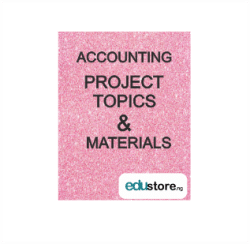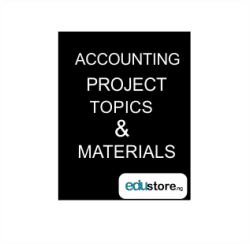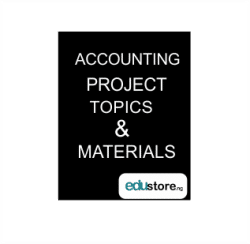Chapter One
Introduction
1.1 Background of the Study
Nigeria is the most populous country in Africa with a population of over 158 million people; it is a nation endowed with natural and human resources (Adeyemi, 2012). Despite its abundance of wealth, Nigeria, like other sub-Saharan countries, remains one of the poorest countries in the world (Dibie & Herron, 2002).
The underdevelopment in Nigeria, however, has been attributed to leadership ineptitude, corruption, an ill-conceived development framework, and general inefficiency in the public sector (Adebisi, 2012; Adeyemi, 2012; Adesopo, 2011 and Iheriohanma, 2011). Okagbue (2012) noted that lack of moral integrity among local government officials is one of the reasons for leadership failure in Nigerian local governments and the public sector in general.
The 2014 Transparency International Corruption Perception Index put Nigeria at number 136 out of 174 countries perceived as corrupt (compared to number 144 in 2013). Nigeria’s rated score was 25 out of 100, where zero (0) means very corrupt and 100 means very clean. Other countries with same score as Nigeria are Cameroon, Iran, Kyrgyzstan, Lebanon, and Russia. The Transparency International Global Corruption Barometer (2014) showed that practically every sector of Nigeria is corrupt. On a scale of 1 to 5, with 1 being not corrupt and 5 being extremely corrupt, religious organizations were perceived to be the least corrupt with a ranking of 2.2; NGOs (2.4); media (2.7); business and private sector (2.9); military (3.1); public officials and civil servants (3.5); judiciary (3.7); education system (3.8); parliament and legislature (4.2); political parties (4.5); and police (4.7). Policing is perceived as the most corrupt institution in Nigeria.
DOWNLOAD COMPLETE WORK- For Reference Only: Materials are for research, citation, and idea generation purposes and not for submission as your original final year project work.
- Avoid Plagiarism: Do not copy or submit this content as your own project. Doing so may result in academic consequences.
- Use as a Framework: This complete project research material should guide the development of your own final year project work.
- Academic Access: This platform is designed to reduce the stress of visiting school libraries by providing easy access to research materials.
- Institutional Support: Tertiary institutions encourage the review of previous academic works such as journals and theses.
- Open Education: The site is maintained through paid subscriptions to continue offering open access educational resources.






